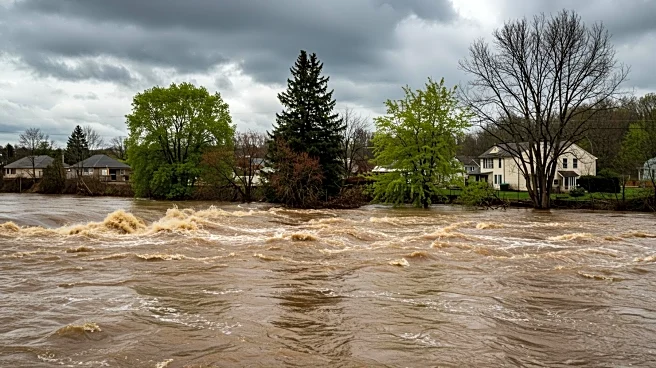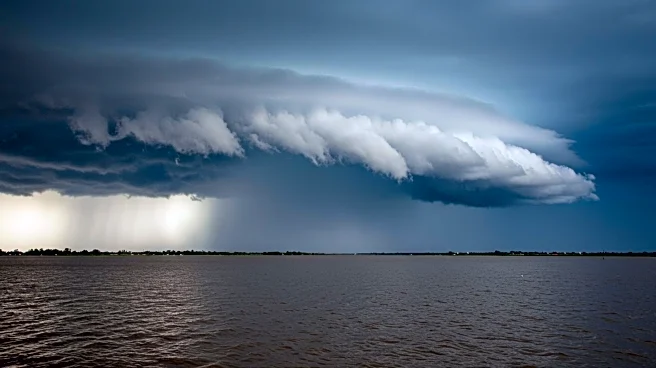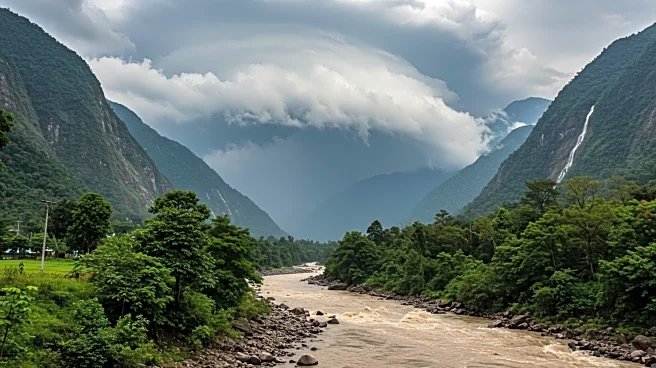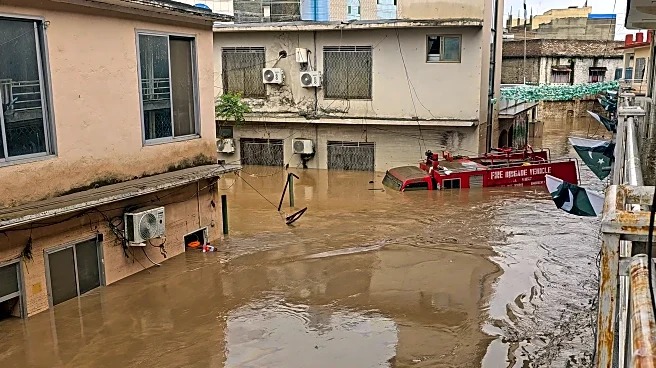What's Happening?
Flash floods have caused widespread destruction across Pakistan, particularly in the Khyber Pakhtunkhwa province, resulting in at least 340 deaths and hundreds missing. Entire villages have been wiped out, and mass burials are taking place. The floods, triggered by torrential monsoon rains, have led to landslides and severe damage to homes, shops, and vehicles. Rescue operations are ongoing, but hopes of finding survivors are diminishing. The National Disaster Management Authority reports that since June 26, 657 people have died, including 171 children and 94 women, with 929 injured. The government has declared several districts as disaster-hit areas.
Why It's Important?
The floods in Pakistan highlight the severe impact of climate-related disasters on vulnerable regions. The devastation has led to significant loss of life and property, exacerbating the humanitarian crisis in the country. The situation underscores the need for international aid and effective disaster management strategies to mitigate the effects of such natural calamities. The ongoing crisis may strain Pakistan's resources and require substantial international support to aid recovery efforts and prevent further loss.
What's Next?
With warnings of more torrential rains, the situation in Pakistan could worsen, leading to further destruction and loss of life. The government and international organizations may need to increase their efforts in providing relief and support to affected areas. Long-term strategies for disaster preparedness and climate resilience will be crucial in preventing similar disasters in the future.
Beyond the Headlines
The floods in Pakistan may prompt discussions on global climate change and its impact on vulnerable regions. The disaster could lead to increased advocacy for climate action and sustainable development practices to reduce the frequency and severity of such events.












